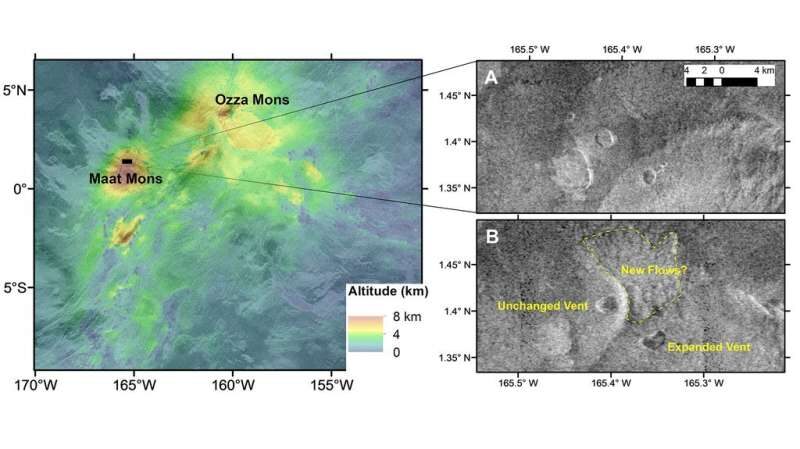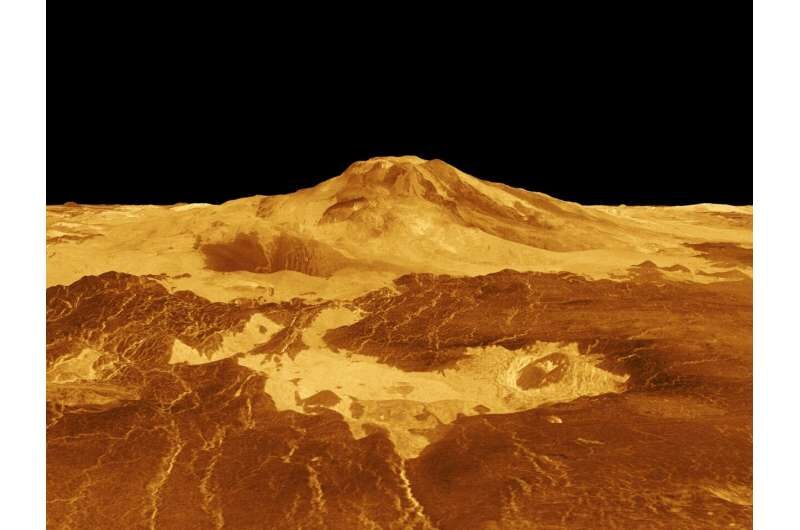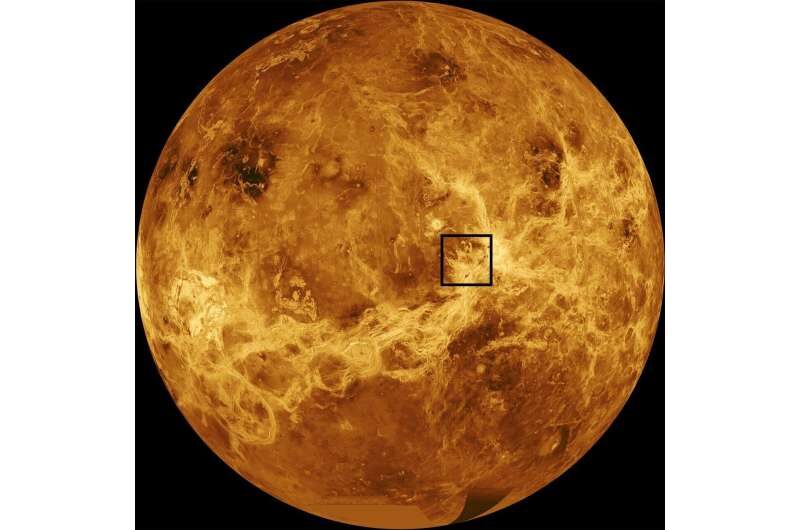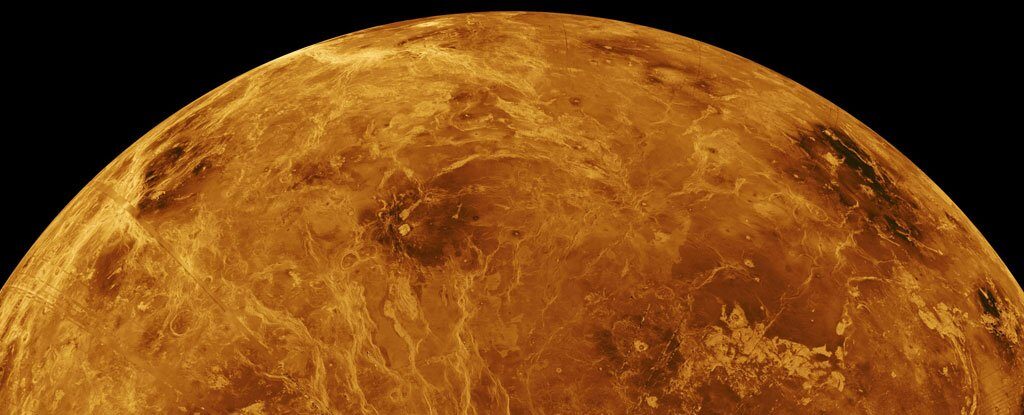Venus, although similar to Earth in size and mass, differs markedly in that it does not have plate tectonics. The boundaries of Earth's moving surface plates are the primary locations of volcanic activity.
New research by University of Alaska Fairbanks Geophysical Institute research professor Robert Herrick revealed a nearly 1-square-mile volcanic vent that changed in shape and grew over eight months in 1991. Changes on such a scale on Earth are associated with volcanic activity, whether through an eruption at the vent or movement of magma beneath the vent that causes the vent walls to collapse and the vent to expand.
The research was published today (March 15) in the journal Science.
Herrick studied images taken in the early 1990s during the first two imaging cycles of NASA's Magellan space probe. Until recently, comparing digital images to find new lava flows took too much time, the paper notes. As a result, few scientists have searched Magellan data for feature formation.
"It is really only in the last decade or so that the Magellan data has been available at full resolution, mosaicked and easily manipulable by an investigator with a typical personal workstation," Herrick said.
Altitude data for the Maat and Ozza Mons region on the Venus surface is shown at left, with the area of study indicated by the black box. At right are the before (A) and after (B) Magellan observations of the expanded vent on Maat Mons, with possible new lava flows after an eruptive event. Credit: Robert Herrick/UAF

"Ozza and Maat Mons are comparable in volume to Earth's largest volcanoes but have lower slopes and thus are more spread out," Herrick said.
Maat Mons contains the expanded vent that indicates volcanic activity.
Herrick compared a Magellan image from mid-February 1991 with a mid-October 1991 image and noticed a change to a vent on the north side of a domed shield volcano that is part of the Maat Mons volcano.
The vent had grown from a circular formation of just under 1 square mile to an irregular shape of about 1.5 square miles.
The later image indicates that the vent's walls became shorter, perhaps only a few hundred feet high, and that the vent was nearly filled to its rim. The researchers speculate that a lava lake formed in the vent during the eight months between the images, though whether the contents were liquid or cooled and solidified isn't known.

The researchers offer one caveat: a nonvolcanic, earthquake-triggered collapse of the vent's walls might have caused the expansion. They note, however, that vent collapses of this scale on Earth's volcanoes have always been accompanied by nearby volcanic eruptions; magma withdraws from beneath the vent because it is going somewhere else.
The surface of Venus is geologically young, especially compared to all the other rocky bodies except Earth and Jupiter's moon Io, Herrick said.
"However, the estimates of how often eruptions might occur on Venus have been speculative, ranging from several large eruptions per year to one such eruption every several or even tens of years," he said.
Herrick contrasts the lack of information about Venusian volcanism with what is known about Jupiter's moon Io and about Mars.
"Io is so active that multiple ongoing eruptions have been imaged every time we've observed it," he said.
On a geological time scale, relatively young lava flows indicate Mars remains volcanically active, Herrick said.

Herrick's research adds Venus to the small pool of volcanically active bodies in our solar system.
"We can now say that Venus is presently volcanically active in the sense that there are at least a few eruptions per year," he said. "We can expect that the upcoming Venus missions will observe new volcanic flows that have occurred since the Magellan mission ended three decades ago, and we should see some activity occurring while the two upcoming orbital missions are collecting images."
Co-author Scott Hensley of NASA's Jet Propulsion Laboratory performed the modeling for the research.
More information: Robert R. Herrick, Surface changes observed on a Venusian volcano during the Magellan mission, Science (2023). DOI: 10.1126/science.abm7735.




Reader Comments
to our Newsletter